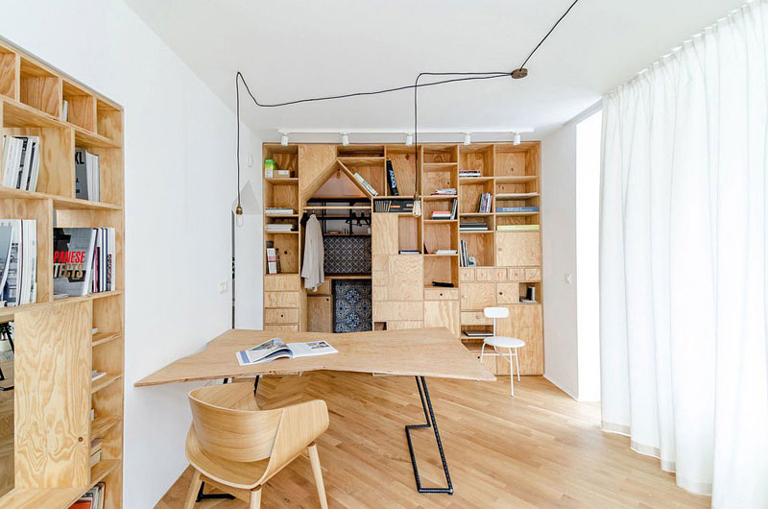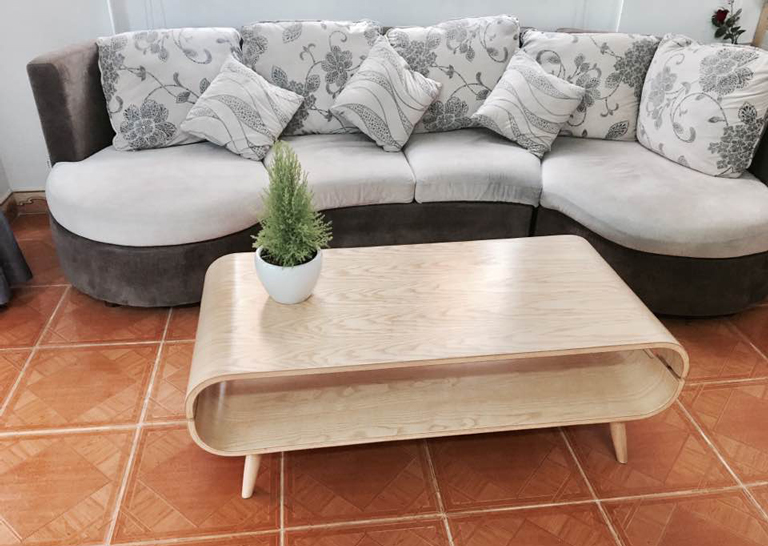What is plywood? This is probably the question of many customers when they want to choose furniture products from plywood. To help you have the most basic knowledge, and choose furniture more effectively, we have summarized it in the following article.

-
What is Plywood? Production process and grading
What is plywood
Plywood is a line of industrial wood made from pressing many thin slices of wood together. These slices of wood are called veneers, they are pressed at right angles to form plywood panels.
Plywood has good durability, is waterproof, anti-warping and less susceptible to temperature effects. Another feature is that because there are thin slices of wood arranged in a perpendicular direction, it has very good traction.
Production process of plywood
The process of producing Plywood includes two main stages: Creating veneer and heat pressing
Initially, the wood will be cut into paper-thin slices of wood, called veneer. Next, the veneer will be dried and graded before gluing. They will be stacked to the thickness of Plywood and then heat pressed to form sheets.
Classification of Plywood
Currently on the market using 02 most popular Plywood are:
- Phenol adhesive Plywood: This type of plywood has high hardness, flat surface and is extremely water resistant. They are often used in construction, shipbuilding industry or interior decoration.
- Formaldehyde adhesive plywood: This type of plywood is very effective against warping, shrinking and twisting.
-
The pros and cons of Plywood
Currently, not only natural wood or metal, plastic, … are used to produce furniture, household appliances, but also Plywood is used quite commonly. Especially natural wood is increasingly depleted, industrial woods are a great replacement for many families.
Advantages of plywood
- Good bearing capacity, less deformation, warping or termites.
- Excellent moisture resistance and can be used in high humidity environments.
- Capable of screwing, good adhesion
- Reduce cold treatment time such as PU coating, sanding because the surface is relatively smooth.
- Competitive price compared to other wood products such as finger joint or MDF.
Disadvantages of Plywood
- Plywood has the disadvantage that if it is not treated with standard drying, it is often easy to warp, the surface is rough, not flat, leading to unsightly and often delamination when in a high humidity environment.
- Low termite resistance when not treated well before plywood.
- Uneven color, not natural like MDF and MFC.
-
Application of Plywood in life
Compared with natural woods, Plywood is highly appreciated for its quality, durability, bearing capacity as well as the richness of colors and designs. Besides, their cost is not too high as natural wood. This is one of the reasons why Plywood is gradually becoming popular in interior construction.
In daily life, there are many furniture products made from plywood. Here are some samples of beautiful furniture for the home from plywood.


